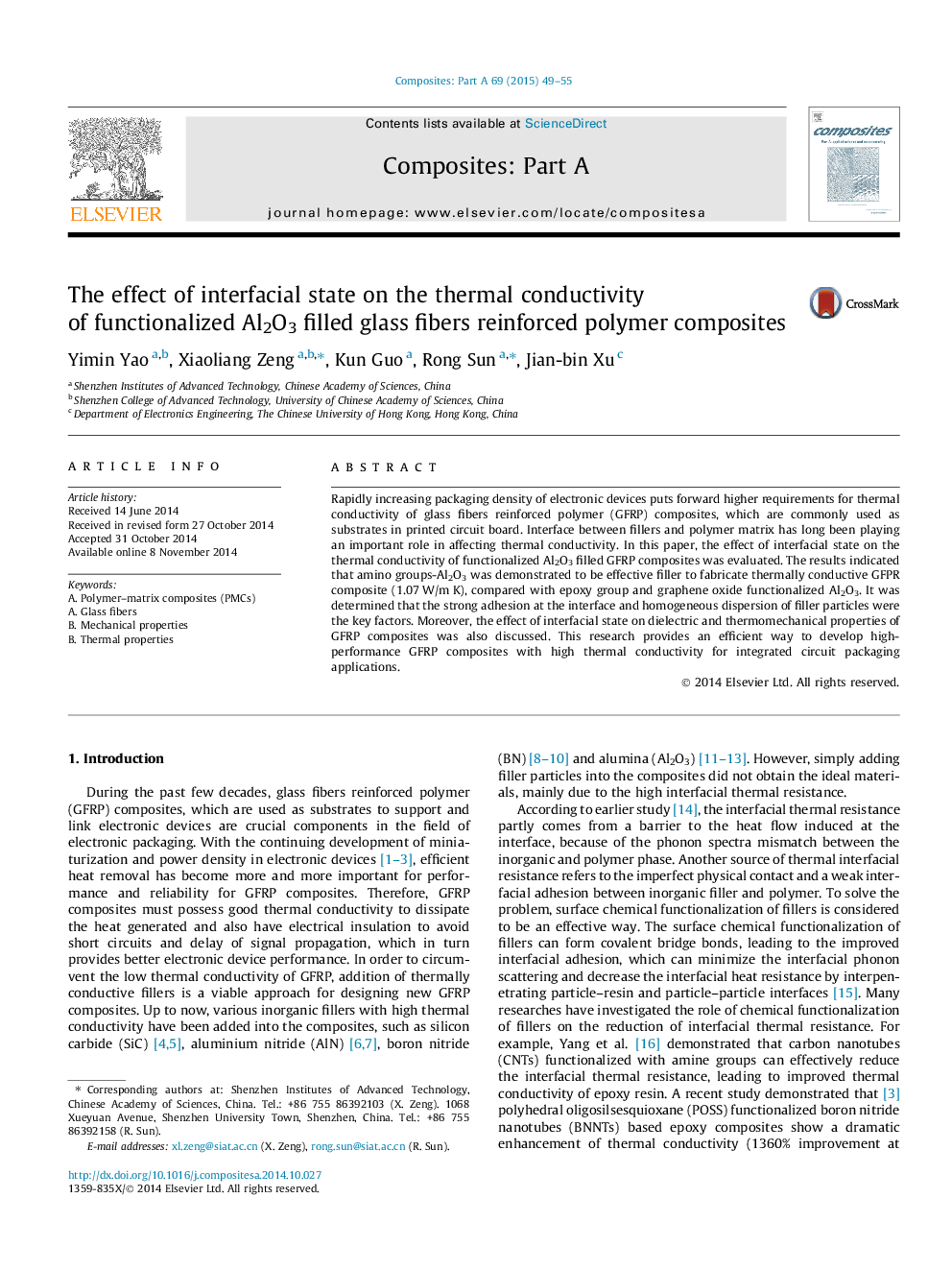| Article ID | Journal | Published Year | Pages | File Type |
|---|---|---|---|---|
| 7892043 | Composites Part A: Applied Science and Manufacturing | 2015 | 7 Pages |
Abstract
Rapidly increasing packaging density of electronic devices puts forward higher requirements for thermal conductivity of glass fibers reinforced polymer (GFRP) composites, which are commonly used as substrates in printed circuit board. Interface between fillers and polymer matrix has long been playing an important role in affecting thermal conductivity. In this paper, the effect of interfacial state on the thermal conductivity of functionalized Al2O3 filled GFRP composites was evaluated. The results indicated that amino groups-Al2O3 was demonstrated to be effective filler to fabricate thermally conductive GFPR composite (1.07 W/m K), compared with epoxy group and graphene oxide functionalized Al2O3. It was determined that the strong adhesion at the interface and homogeneous dispersion of filler particles were the key factors. Moreover, the effect of interfacial state on dielectric and thermomechanical properties of GFRP composites was also discussed. This research provides an efficient way to develop high-performance GFRP composites with high thermal conductivity for integrated circuit packaging applications.
Keywords
Related Topics
Physical Sciences and Engineering
Materials Science
Ceramics and Composites
Authors
Yimin Yao, Xiaoliang Zeng, Kun Guo, Rong Sun, Jian-bin Xu,
